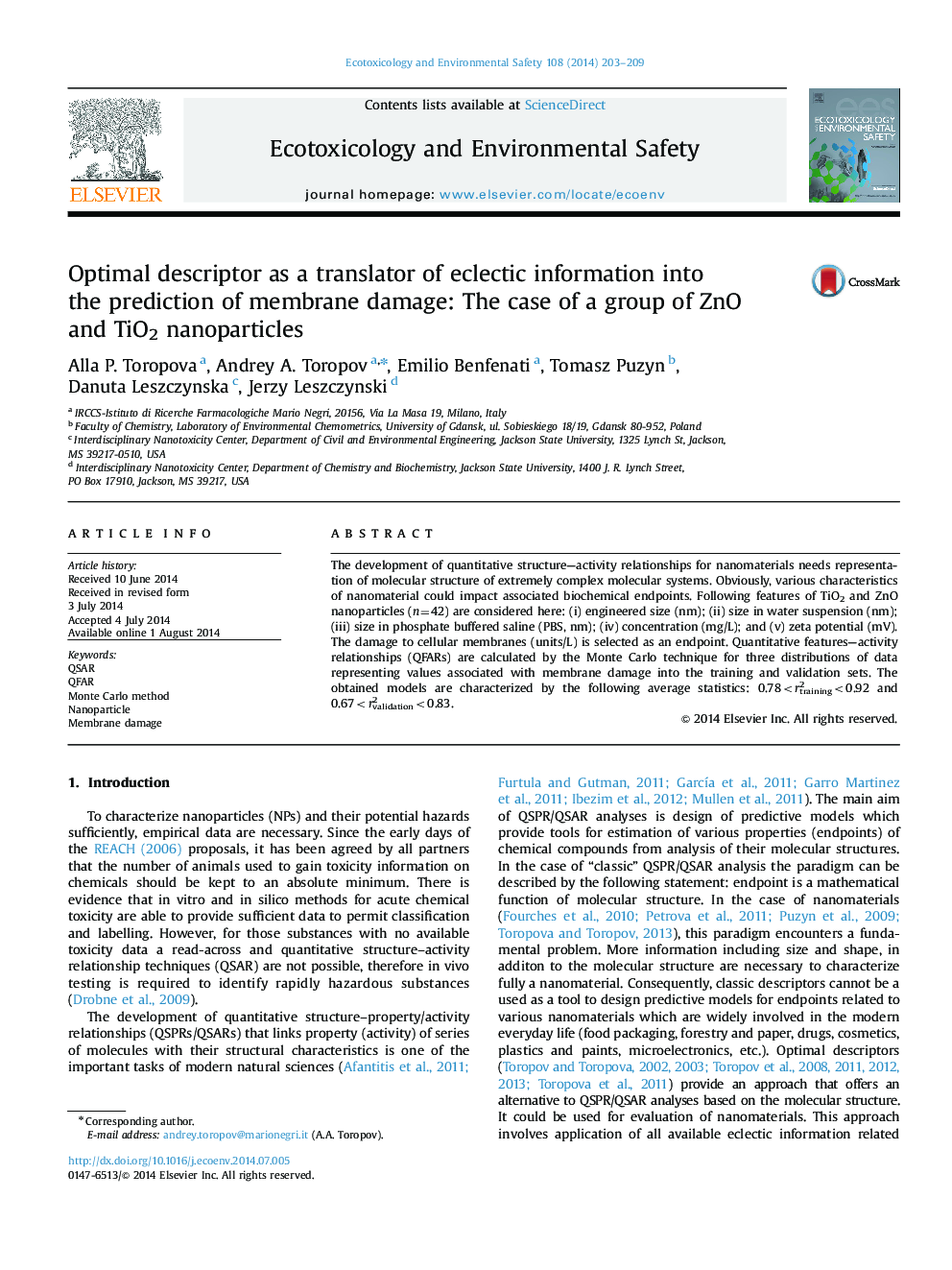| Article ID | Journal | Published Year | Pages | File Type |
|---|---|---|---|---|
| 4420106 | Ecotoxicology and Environmental Safety | 2014 | 7 Pages |
•Nanoparticles (NPs) are represented by codes of physicochemical features.•Two kinds of NPs are examined TiO2 and ZnO.•Optimal descriptors were used to build up a predictive model for membrane damage.•The optimal descriptor is a mathematical function of physicochemical NPs features.•The statistical quality of the model is quite good.
The development of quantitative structure—activity relationships for nanomaterials needs representation of molecular structure of extremely complex molecular systems. Obviously, various characteristics of nanomaterial could impact associated biochemical endpoints. Following features of TiO2 and ZnO nanoparticles (n=42) are considered here: (i) engineered size (nm); (ii) size in water suspension (nm); (iii) size in phosphate buffered saline (PBS, nm); (iv) concentration (mg/L); and (v) zeta potential (mV). The damage to cellular membranes (units/L) is selected as an endpoint. Quantitative features—activity relationships (QFARs) are calculated by the Monte Carlo technique for three distributions of data representing values associated with membrane damage into the training and validation sets. The obtained models are characterized by the following average statistics: 0.78 Graphical abstractFigure optionsDownload full-size imageDownload as PowerPoint slide
